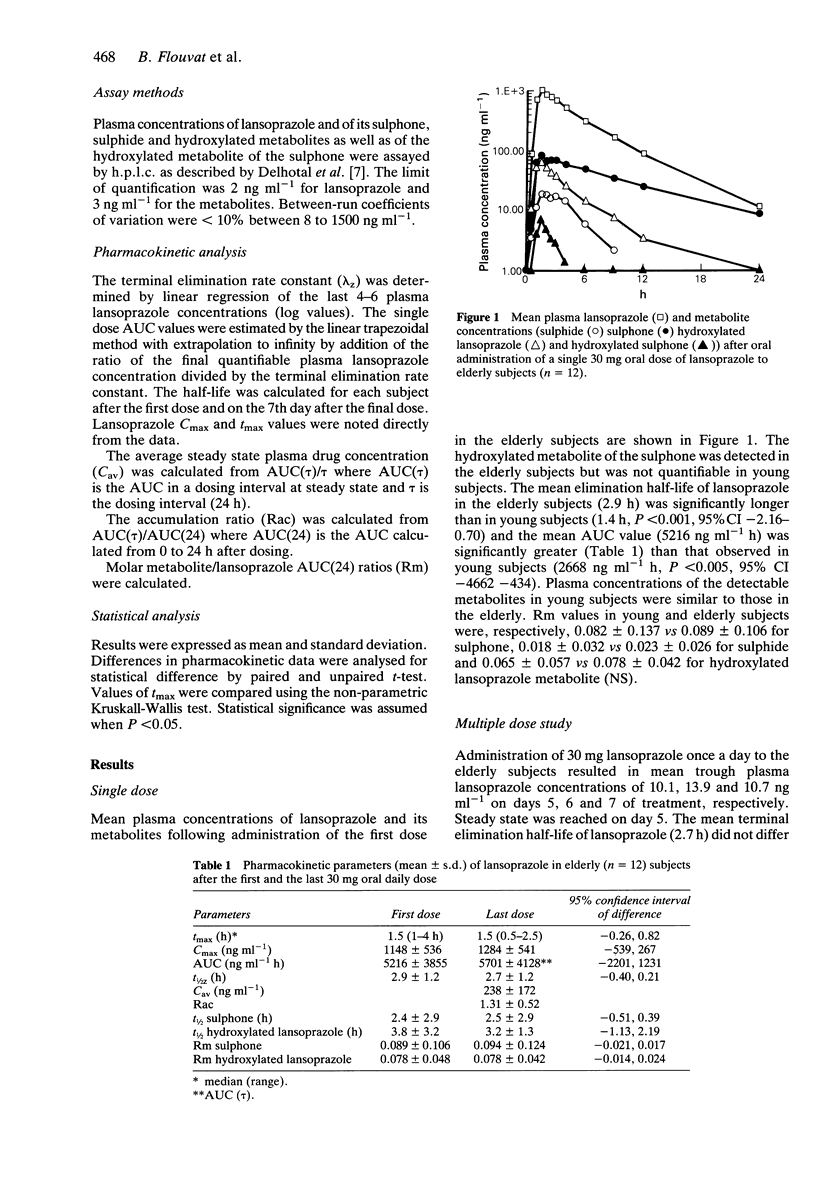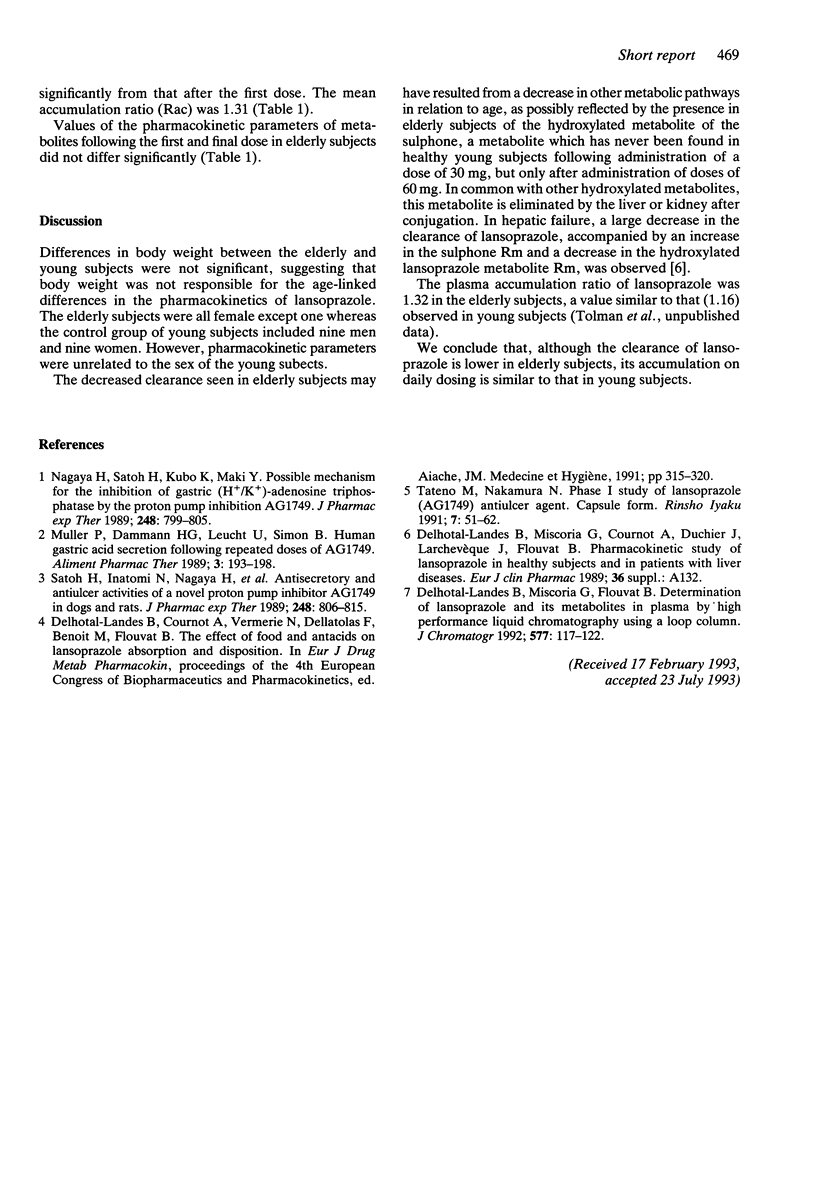Abstract
Plasma concentrations of lansoprazole and of its sulphone, sulphide and 5-hydroxylated metabolites were determined after oral administration of a single 30 mg dose and after 7 days of treatment with a daily 30 mg dose in 12 elderly subjects (mean age 83 years). Results after a single dose were compared with those from a historical control group of 18 young subjects (mean age 23 years). Mean values of AUC after single dose were 2668 ng ml(-1) h in the young subjects and 5216 ng ml(-1) h in the elderly (P < 0.05). Mean t 1/2z values in young and elderly subjects were 1.4 h and 2.9 h, respectively (P < 0.001). Plasma concentrations of the metabolites were similar in both groups. However, the hydroxylated metabolite of the sulphone was detected only in elderly subjects. Steady state plasma concentrations of lansoprazole were reached after 3 days of dosing with lansoprazole. The accumulation ratio was 1.31 in the elderly subjects.
Full text
PDF


Selected References
These references are in PubMed. This may not be the complete list of references from this article.
- Landes B. D., Miscoria G., Flouvat B. Determination of lansoprazole and its metabolites in plasma by high-performance liquid chromatography using a loop column. J Chromatogr. 1992 May 20;577(1):117–122. doi: 10.1016/0378-4347(92)80605-p. [DOI] [PubMed] [Google Scholar]
- Müller P., Dammann H. G., Leucht U., Simon B. Human gastric acid secretion following repeated doses of AG-1749. Aliment Pharmacol Ther. 1989 Apr;3(2):193–198. doi: 10.1111/j.1365-2036.1989.tb00205.x. [DOI] [PubMed] [Google Scholar]
- Nagaya H., Satoh H., Kubo K., Maki Y. Possible mechanism for the inhibition of gastric (H+ + K+)-adenosine triphosphatase by the proton pump inhibitor AG-1749. J Pharmacol Exp Ther. 1989 Feb;248(2):799–805. [PubMed] [Google Scholar]
- Satoh H., Inatomi N., Nagaya H., Inada I., Nohara A., Nakamura N., Maki Y. Antisecretory and antiulcer activities of a novel proton pump inhibitor AG-1749 in dogs and rats. J Pharmacol Exp Ther. 1989 Feb;248(2):806–815. [PubMed] [Google Scholar]


